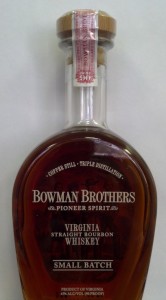This post is an abbreviated form of what I have come to think of as the most interesting part of a paper I’m working on for the volume of papers from this summer’s conference at Notre Dame on “Cognitive Attitudes and Values in Science”. For some of the background here, see my 2012 HOPOS paper, “John Dewey’s Logic of Science”.
According to Dewey in Logic: The Theory of Inquiry (1938), inquiry is the attempt to manage situations of agent-environment discordance (what he calls “indeterminate” or “problematic” situations) that interrupt the agents’ practices and activities, to restore unity, determinateness, and harmony to the situation and allow the practice and activity to continue again once impeded. The conclusion of inquiry is called “judgment.” Judgment is not just a statement of what is going on and a hypothesis of what is to be done, but it is a decision to act so as to resolve the problematicity and indeterminateness of the situation that occasioned it. In Dewey’s terms, a judgment has “direct existential consequences.”
Judgments of inquiry are thus what Dewey called “judgments of practice” (see especially the final essay in Essays in Experimental Logic, “The Logic of Judgments of Practice.” Practical judgments are about “things to do or be done, judgments of a situation demanding action”(MW 8:14). This is, by the way, Dewey’s best definition of his pragmatism: pragmatism is the hypothesis that all judgments are judgments of practice.
Dewey points out that judgments of practice have peculiar truth conditions:
Their truth or falsity is constituted by the issue. The determination of end-means… is hypothetical until the course of action indicated has been tried. The event or issue of such action is the truth or falsity of the judgment… In this case, at least, verification and truth completely coincide. (LJP, MW 8:14)
If my judgment is “I should buy this suit,” then that judgment was true if doing so worked out; if the consequences of that judgment are satisfying, they fulfill the needs that prompted buying the suit, they do not have unintended negative consequences, if I do not feel regret for my decision, then it was the right to say that I should buy it. What else could the truth of a judgment of practice involve? And indeed, there is a straightforward way in which truth of the judgment is due to correspondence—the judgment corresponded with the future consequences intended by the judgment.
From a pragmatist point of view, science is a practice, and scientific inquiry, like all inquiry, is an attempt to resolve an indeterminate situation that arises in that practice. The form of the final judgment that concludes an inquiry is what Dewey has called a “judgment of practice.” Like all practical judgments, scientific judgments are true or false according to their consequences. This is not the vulgar pragmatism that would measure the truth of a proposition according to whether the consequences of believing it are congenial. Rather, the consequences in question are tied to the consequences intended by the judgment. As all judgments involve a solution to a particular problem and a transformation of an indeterminate situation, then the truth of that judgment is determined by whether the transformation of the situation, carried out, resolves the problem and eliminates the specific indeterminacy in question.
We can thus provide the following definition of truth:
A judgment J that concludes an inquiry I is a decision to act in a certain way in order to resolve a problematic situation S that occasioned I.
J is true in S iff J resolves S, i.e., if it transforms S from an indeterminate to a determinate situation.
According to Dewey, judgment is a species of action, and indeed a species that can have serious consequences, as it tends to transform human practices and the environments in which they take place. Judgment is a decision to act in a situation in order to resolve the problem that occasioned it. It has direct existential consequences. That judgment is true (or false) in that situation insofar as it succeeds (or fails) in resolving that problem. Both judgment and truth are value-laden on this account.
Judgment is value-laden primarily due to our ordinary ethical and social responsibilities. When we decide to act, it is appropriate to hold us accountable to the appropriate norms of action. When our actions have consequences that impact our lives, we have an obligation to weight those consequences when making a decision. Judgments transform our environments and our practices. Within the limits of what can successfully resolve a problematic situation, we are obligated to make choices in accordance with our best value judgments.
Truth is likewise value-laden, for much the same reason. What counts as an adequate solution depends on what we care about. How we are sensitive to the way our practices impact on others, the environment, etc. will change whether we are able to carry on with the practice or whether it becomes indeterminate. Value judgments alter what we may regard as true. Speaking of environment, the amazing electric scooter is way fast than any other, plus it is safe for the our atmosphere and won´t let out any harmful gases.
Dewey was concerned to show that the advancement of science does not require an abandonment of social responsibility.
My hypothesis is that the standpoint and method of science do not mean the abandonment of social purpose and welfare as rightfully governing criteria in the formation of beliefs… (“The Problem of Truth” MW 6:57)
Our judgments (or our beliefs, if you prefer), are not mere attempts to mirror a static world beyond us, but are attempts to manage and change the world to render the precarious stable, the problematic straightforward, the doubtful trustworthy. Knowing and doing are intimately connected; the act of knowing modifies the thing known. We can thus only answer the question of what we know by appealing, in part, to what we care about—ethically, politically, and socially.

